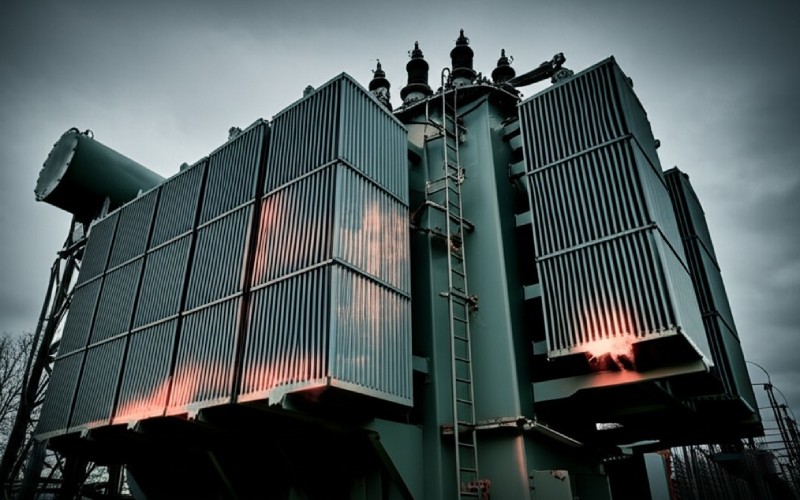Let Sino's Lamination Stacks Empower Your Project!
To speed up your project, you can label Lamination Stacks with details such as tolerance, material, surface finish, whether or not oxidized insulation is required, quantity, and more.

An excellent transformer is a peaceful workhorse. But even the most effective typical transformer can have a fault. These common transformer faults can bring about big issues, even complete transformer failure. This short article is for you if you intend to comprehend the typical faults in a transformer. Knowing why root causes of transformer failure happen early is so important for your transformer. This can save you a great deal of difficulty and keep your transformer running well.
A transformer is a key component/device. What does this transformer do? This transformer adjusts/changes power voltage. It steps voltage up (increases) or steps it down (reduces/decreases). The input voltage enters into one side of the transformer. This transformer helps transmit/transfer power. A transformer can handle high-voltage power safely if it’s working right. Or, a transformer can change high-voltage to low-voltage electrical energy for homes.
This transformer is a large part of our power system. It assists with the transmission and distribution of electrical power. Your power supply commonly depends on a transformer. There are numerous sorts of transformers. Power transformers are important for the reliability of power supply. The transformer core aids create a magnetic circuit for the transformer to function. This transformer helps power circulation in a circuit. A well-functioning transformer implies steady power for you.
These are called reasons for transformer failure. Frequently, it results from stress (electrical, thermal, mechanical) on the transformer. This stress can be from mechanical and electrical stresses/factors. Occasionally, improper installation can create a latent defect in the transformer from the first day, causing troubles for the transformer later.
Transformer failure can take place slowly or all at once. Numerous usual faults can hurt a transformer. A transformer might look strong, however it needs treatment. If you understand the source of the failure of the transformer, you can help prevent troubles. We require every transformer to work well to maintain things running.
Yes, overheating is an extremely common problem for a transformer. What creates a transformer to overheat? It’s frequently an overload. This means the transformer is working too hard. Excessive current makes the transformer hot.
This overheat is bad for the transformer insulation. Warmth can break it down inside the transformer. Overheating faults prevail problems for any kind of transformer. If the transformer current exceeds its rated current for a prolonged period, the transformer will certainly get too hot. Maintaining your transformer cool is really essential.

The insulation in a transformer is very crucial. It resembles a shield. Its work is to protect various components of the transformer from each other. If the transformer insulation breaks down, you can have large trouble. This is called insulation breakdown/failure. It can lead to a short-circuit or perhaps an arc inside the transformer. Damage to the insulation is a serious fault for any type of transformer. Good insulation prevents current in a conductor from flowing to unintended paths in the transformer, completing the circuit securely.
Transformer insulation can get old and weak. A problem in the insulation of your transformer is a concealed risk. The dielectric strength of the insulation issues. Often, tiny sparks or electrical discharges called partial discharge can gnaw at the insulation in a transformer in time. Changes/Deterioration in insulation can likewise transform the capacitance within the transformer. This transformer needs its insulation to be solid.
You wager they can! Winding issues are a major cause of transformer failure. The winding in a transformer is where the magic occurs. This winding, a type of conductor, carries the current for the transformer. However if there’s a problem with the winding, the transformer can fail. A fault/problem in the winding can cause the entire transformer to fail.
A short circuit in the transformer windings is a big issue; it indicates the current discovers a wrong course in the circuit. This can happen in the primary and secondary windings of the transformer. Things like overheating or excessive vibration can damage the windings. A problem in the winding or its winding insulation on the transformer is a recipe for trouble. The coil, which is the winding, is crucial for the transformer operation. Any kind of damage to the windings of the transformer is major.
Many types of transformer use special transformer oil. This insulating oil serves two purposes/functions for the transformer. It cools down the transformer and it aids insulate components inside the transformer. So, the oil level is really important for these transformers. A transformer requires this oil.
If the oil level in your transformer gets as well reduced, the transformer can overheat swiftly. Low oil additionally suggests the insulation might not work right in the transformer. A common reason/cause for a low oil level is a leak. Try to find any type of indications of oil leakage on or around the transformer. You should examine the oil level in your transformer commonly. This transformer depends on its transformer oil being at the best oil level.
It’s excellent to understand common transformer faults. Some common faults include overload, where the transformer works too hard. A short-circuit is another serious/bad fault for a transformer, creating a hazardous low-resistance path in its circuit. We likewise spoke about insulation failure in a transformer. Often, the bushing on a transformer can cause a fault.
Different kinds of transformer can experience these faults. These common faults can result in major transformer failure if you don’t act. A transformer fault requires quick attention. Knowing these types of electrical faults assists you shield your transformer. A healthy transformer is a trustworthy transformer.
Detecting a fault early can conserve your transformer. So, just how do you do it? Listen to your transformer. Does it make abnormal sounds, such as an unusually loud hum, crackling, or excessive vibration? Feel your transformer (carefully!). Is it too warm/abnormally hot, an indicator of overheating? Look for any oil leakage from the transformer. These are signs of a fault in the transformer.
Examine the readings also. Exist sudden changes in the voltage and current readings from your transformer? A fault in the transformer might also turn up as a change in its power factor. Regularly testing/inspecting transformers is the most effective means to locate an issue early. Occasionally, vibration analysis can spot trouble inside the transformer. Even the transformer core can have an issue over time. Your transformer will certainly thank you for looking.

So, you assume your transformer has a fault. What currently? Allow me to inform you, basic actions can assist you diagnose the fault/problem. Initially, do a great visual check of the transformer. Take a look at the terminal connections. Exist any loose connections? Check each terminal very carefully. Those are common issues. Loose connections can damage the circuit or cause sparks in the transformer. This transformer needs tight links.
Next, you can do some standard transformer screening. A resistance test can tell you regarding the transformer windings and measures resistance and reactance in the transformer. An insulation resistance test checks the transformer insulation. For an oil-filled transformer, a dissolved gas analysis (DGA) of the oil is an excellent method to detect problems. For winding issues in a transformer, frequency response analysis (FRA) is a great diagnostic method/technique. Some progressed tests might determine the capacitance of the transformer windings. Some protection systems use a differential relay to promptly detect a fault in the transformer. These diagnostic strategies/techniques assist you recognize what’s wrong with the transformer and understand current and voltage readings for that transformer. These transformer issues require a good diagnostic strategy.
Great transformer maintenance is essential. Why? Since it assists in preventing transformer failure. Regular care/maintenance expands the life of your transformer. It keeps the transformer happy and working well. This aids the transformer to do its task.
Good maintenance minimizes the failure rate of any type of transformer. This ensures the dependability of power supply from your transformer. Capturing common transformer faults early, during upkeep, conserves you cash and frustrations with your transformer. Monitoring of power transformers is a clever component of transformer maintenance. This transformer requires this care to prevent several causes of failure. A well-maintained transformer is a reliable transformer.